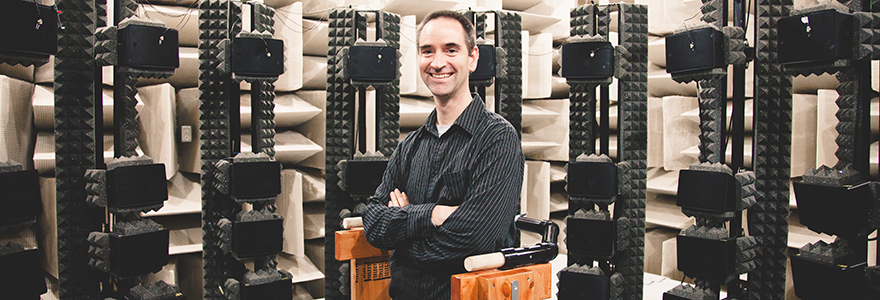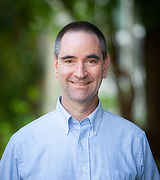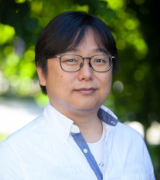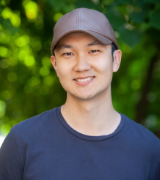Research
Contact the NCA
519-661-3901
info@nca.uwo.ca
Elborn College - Room 2262
1201 Western Road
London, Ontario N6G 1H1
Spatial and Prosthetic Hearing Lab

About the Lab
Lab Director
Spatial hearing is an important component of auditory perception that provides awareness of the locations of sound sources situated within and outside the visual range and supports the ability to segregate and attend to one voice out of many in a crowded room. Dr. Macpherson and his students have investigated a variety of issues related to spatial hearing in normally hearing and hard of hearing listeners and have provided expertise and methodological assistance for projects conducted with colleagues within the NCA, across the Western campus, and internationally. Utilizing facilities such as the Anechoic Chamber, Reverberation Chamber, Hearing Research Laboratory, and Hearing Research Clinic, research topics have included:
Cue weighting in sound localization
Lacking the two-dimensional retinal receptors available in vision, the auditory system must construct its representation of space by combining multiple sources of information present in the left- and right-ear signals. These include interaural differences of time and intensity, which cue left/right location, and spectral cues arising from the directionally dependent acoustic filtering performed by the pinna, head, and shoulders, which provide up/down and front/back information. When different cues carry common or conflicting information, it is important to understand how the auditory system combines or weights those cues and how background noise or assistive listening devices might affect that weighting.
Use of dynamic cues in spatial hearing
In addition to the binaural difference and spectral cues for sound location mentioned above, information about the front/back location of a sound source is also present in the relationship between changes in listener head orientation and the resulting changes in interaural time and intensity differences. Correct interpretation of changing interaural difference cues for front/back localization (or to update spatially selective auditory attention during head motion) requires the auditory system to have accurate knowledge of the direction of head motion. A current focus of Dr. Macpherson’s research program is role of inputs from the vestibular, proprioceptive, and visual systems in dynamic spatial hearing for listeners with normal or impaired auditory/vestibular systems and in hearing-aid and cochlear-implant listening.
Virtual auditory space methods in spatial hearing research
Many of our studies have involved the use of virtual auditory space techniques in which sounds presented over headphones are synthesized to reproduce naturally occurring cues (or manipulated versions) for a desired spatial arrangement of external sound sources. Such methods are demanded when independent control over the left and right ear signals is essential to the experiment but can also be expedient when the experimental setting is not conducive to free-field presentation We are also applying virtual auditory space methods to the study of speech perception and hearing aid function in settings such as the noisy environment of car interiors. Because headphone-based presentation is inappropriate for simulations involving hearing-aid listening, we have developed in the NCA’s anechoic chamber a high channel-count sound presentation system that will permit free-field reconstruction of sound fields captured with a spherical microphone array.
Lab Members

Ewan Macpherson
Associate Professor, School of Communication Sciences and Disorders
- Spatial hearing and effects of listening through auditory prostheses
- Vestibular and other multisensory contributions to dynamic spatial hearing and auditory spatial attention
- Applications of virtual acoustics in auditory and audiological research
Students

Sung Been Cho
PhD Student (HRS - Hearing Science)
- Room acoustics
- Auditory scene simulation
- Hearing aid signal processing

Yan Jiang
PhD Student (HRS - Hearing Science)
- Psychoacoustic prediction of hearing aid signal processing benefits

Marina Tawdrous
MClSc/PhD Student (Audiology/Hearing Science)
- Hearing aid users' perception of reverberation
- Optimization of room acoustics and hearing aids for performing musicians

Sally Norris
MClSc/PhD Student (Audiology/Hearing Science)
- Auditory-motor feedback in string instrument performance
- Interpersonal coordination of musical intonation in string quartets

Adam Cotton
MSc Student (HRS - Hearing Science)
- Effects of natural and urban ultrasoundscapes on cognitive and affective restoration

Grace Otto
MSc Student (Neuroscience)
- Effects of vestibular stimulation on auditory spatial attention
Publications
Recent lab publications on Google Scholar and Scopus.
Participate in a Research Study
Interested in participating in a research study? Visit the How You Can Help section of our website for more information.

